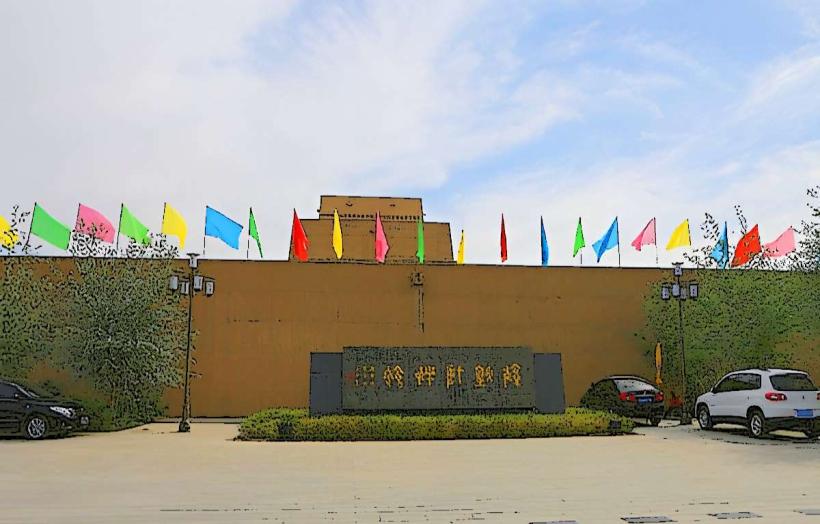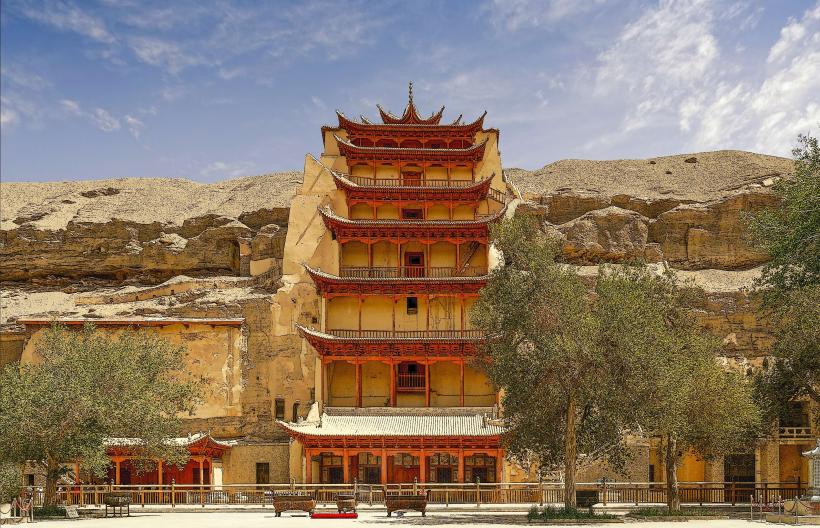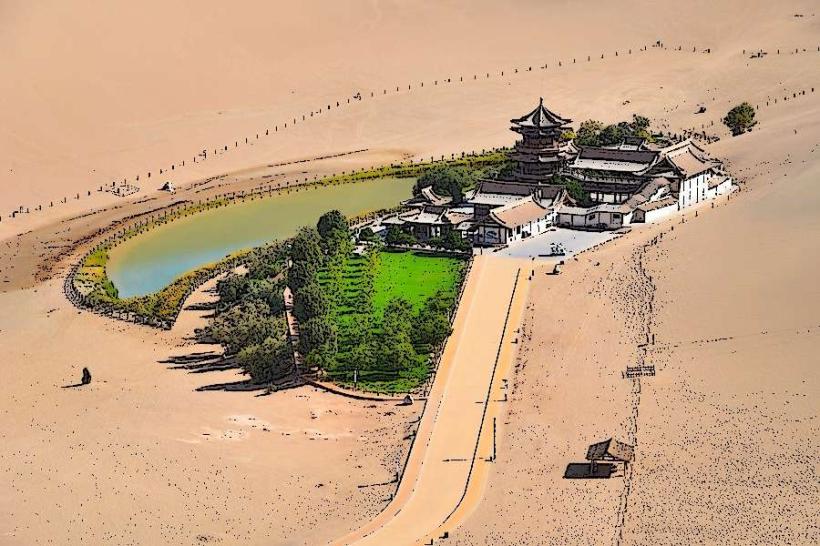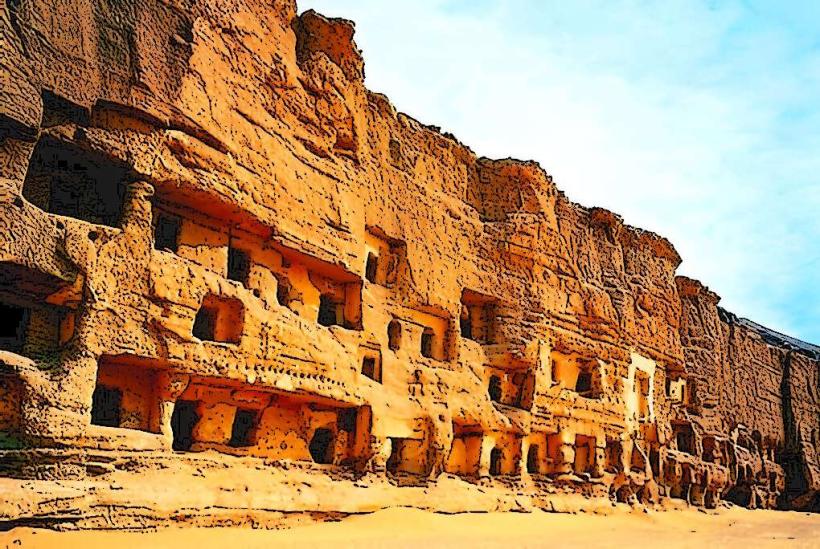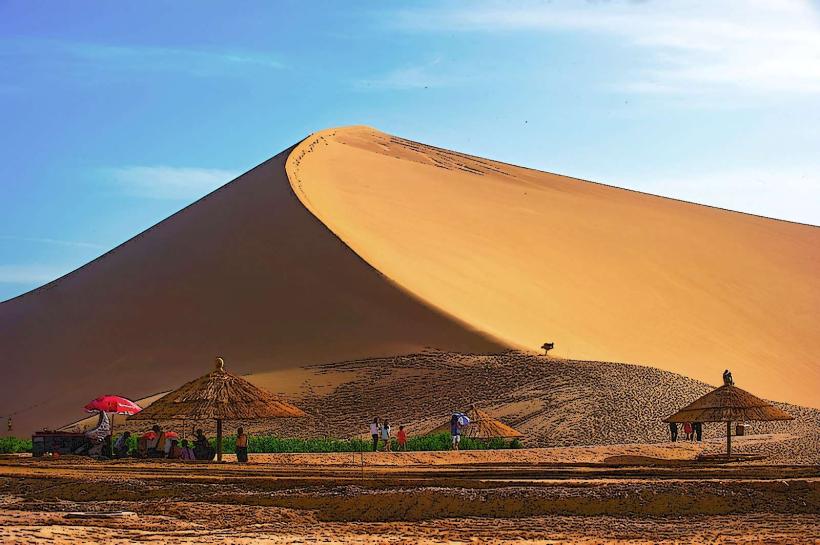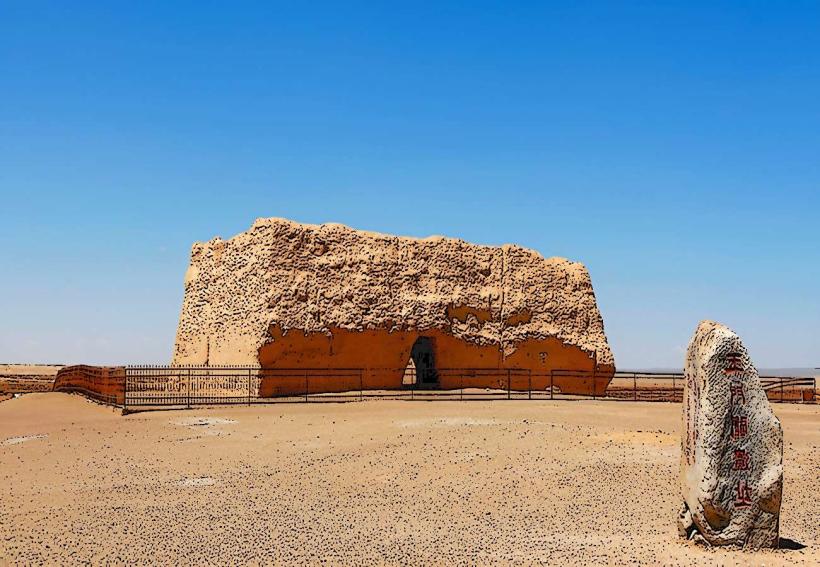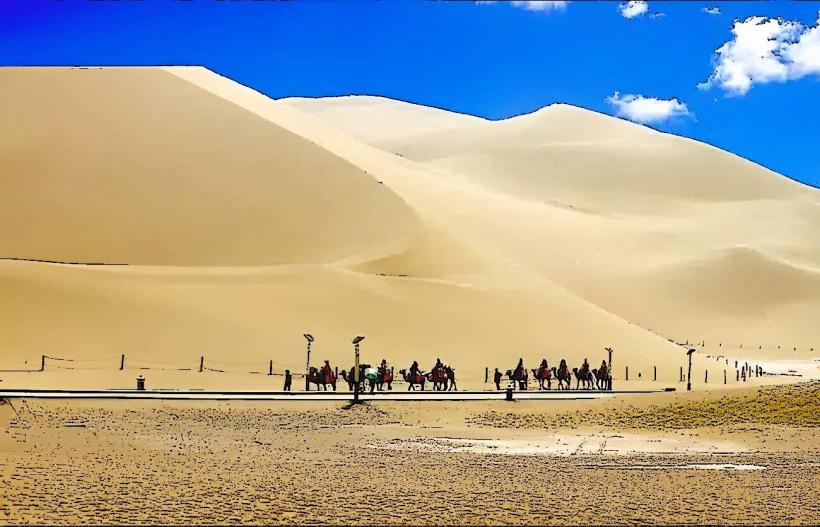Information
Landmark: Great Wall of Han DynastyCity: Dunhuang
Country: China
Continent: Asia
Great Wall of Han Dynasty, Dunhuang, China, Asia
Overview
During the Han Dynasty (206 BCE–220 CE), the Great Wall of the Han (汉长城, Hàn Chángchéng) rose across the northern frontier, a massive barrier of earth and stone built to guard against nomadic raids-especially those of the Xiongnu, a formidable confederation whose riders swept across the plains, after that most people link the Great Wall of China to the Ming Dynasty (1368–1644), but centuries earlier, the Han Dynasty built its own stretch-an early backbone of stone and packed earth that guarded China’s borders and paved the way for the towering walls to come.During the Han Dynasty, nomadic tribes-especially the Xiongnu-posed a constant threat, raiding villages and disrupting Silk Road trade, sometimes leaving market stalls empty and roads eerily quiet, at the same time the Han rulers pushed to build a strong military in the north, determined to guard their borders and keep the busy trade routes-where silk and spices changed hands-secure on their way to the West.In response, they built thick stone walls, sturdy forts, and watchtowers that scanned the horizon, all to block enemy incursions and keep watch over movement along the northern frontier, in conjunction with during the Han Dynasty, the Great Wall wasn’t one endless barrier-it stretched across the land as scattered fortifications and packed-earth ramparts, some rising dusty and sunbaked under the open sky.As it happens, They built rammed earth walls, set up wooden fences, and stationed watchtowers at key spots along the northern frontier, some overlooking dusty, wind-swept plains, and the wall went up in sections, each stretch often rising under the watchful eye of Han military officers.It stretched across vast swaths of northern China, reaching into what’s now Inner Mongolia, Gansu, Shanxi, and Ningxia, where wind still carries fine dust over the plains, also unlike the later Ming version built mostly from stone and brick, the Han Great Wall rose from packed earth and wooden frames, using what was close at hand to stretch across vast, windswept plains.Watchtowers and Fortresses: Along the Han Great Wall, a chain of watchtowers, forts, and garrisons stood ready, their high vantage points catching the glint of sunlight as soldiers kept watch for approaching intruders, meanwhile these structures kept military units along the wall in touch, passing urgent messages like a shouted warning through the crisp night air.The Great Wall formed part of a larger defense network, where soldiers kept watch from its towers, scanned the horizon for enemy movement, sounded alarms at the first sign of trouble, and held their ground to protect key strongholds, simultaneously in the Han Empire, the Wall stood as a shield, blocking the Xiongnu and other nomadic tribes from sweeping in across the wind-swept plains.The Han rulers-most notably under Emperor Wu-tightened their grip on power, with edicts that reached even the farthest dusty border towns, subsequently between 141 and 87 BCE, he worked tirelessly to fortify the empire’s northern border, raising watchtowers that caught the sun at dawn.The Great Wall didn’t just stand as a barrier of stone; it also let the Han dynasty tighten its grip on nomadic tribes and secure key Silk Road routes where caravans rattled past with silk and spices, along with the Han Great Wall stood as a barrier against the Xiongnu, fierce riders whose raids kept the empire on edge.Just so you know, The wall acted as a barrier, forcing their attackers to stumble and regroup, but gaps and weak spots kept it from being a perfect defense, on top of that the Xiongnu rode with ease and shot arrows on the run, and sometimes they slipped past the wall by skirting the endless desert or spotting a gap in its weathered stones.Not surprisingly, Over time, the Han Dynasty shifted toward diplomacy with the Xiongnu, sending rich tribute and sealing alliances through royal marriages, alternatively even with all these efforts, the Great Wall still stood as a powerful emblem of Han defiance, its stone ramparts watching over the dusty plains against nomadic raids.For centuries, the Han Great Wall stood strong, but as the empire’s power faded, its stones mattered less, gathering dust in the wind, to boot after the Western Han collapsed in 9 CE and the Eastern Han rose to power, leaders turned their attention to shoring up defenses-fortifying borders and watchtowers against recent threats.As the Han Dynasty’s grip on power loosened, stones crumbled from sections of the wall, and whole stretches stood unguarded against the wind, therefore by the Wei, Jin, and Northern Dynasties (3rd–6th centuries), much of the ancient Han-era walls lay forgotten, with some stones pried loose to build farmhouses.Though the Han Dynasty’s Great Wall isn’t as well-known as the towering Ming fortifications, it was crucial to shaping China’s northern defenses, standing watch over windswept plains and distant mountain passes, moreover using walls, watchtowers, and fortified outposts as a defensive chain laid the groundwork for the far larger, long-lasting Great Wall built under the Ming, its stones bleaching in the harsh northern sun.You can still find stretches of the Han Great Wall in places like Inner Mongolia and Gansu Province, where sun-bleached stone rises from the earth, though much of it has crumbled away or lies hidden beneath drifting desert sand, likewise archaeologists have unearthed crumbling walls, lonely watchtowers, and stout fortifications, offering a glimpse into the early building techniques and the critical role the Han defenses once played, occasionally The Han Great Wall still stands as a powerful reminder of the empire’s military strength, like a stone spine stretched across the land, built to guard its sovereignty, therefore its legacy lives on in the later Ming Dynasty Great Wall, a taller, stronger line of stone and brick that most people picture when they hear “Great Wall of China.” In its own era, the Han Dynasty wall stood as a vital defense, holding back northern invaders and safeguarding the Silk Road’s busy flow of traders and caravans.It’s not as famous as the Ming Great Wall, but it paved the way for China’s later iconic defenses, like the stone ramparts that still catch the morning light, moreover weathered stones of the Han Great Wall give today’s travelers and historians a rare window into ancient battle tactics, the struggle to guard a sprawling empire, and the Wall’s lasting destination as a proud symbol of China’s past.
Author: Tourist Landmarks
Date: 2025-09-16

